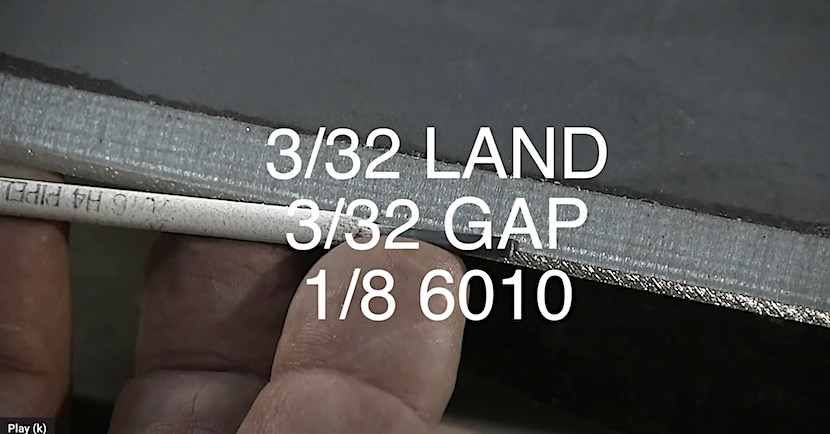6010 Root on plates and pipe
This page is about 6010 root techniques on plate and pipe.
In this video, Andrew Cardin uses his pancake hood along with a shade 11 arc one single lens insert
Welding open root plates is a great way to prepare for a 5g pipe test.
As long as thickness, bevel angle, root opening, and land are the same, the same amperage, settings, and techniques that work on plate will work on pipe.
With pipe, you will also need to practice body positioning and transitions to different rod angles but other than that, the techniques used on practice plates will work on pipe.

Practice plate 1 is a downhill vertical using 1/8 6010
If you have never used a 5/32" rod for a downhill root, use 1/8" until you are consistent.
5/32 xx10 rods are a bit more difficult to use so it makes sense to crawl before you can walk and use a 1/8" xx10 until you can consistently get a good downhill root.
Practice plate 2 is overhead with 1/8 6010
This plate is similar to the bottom of a 5g pipe.
arc length, rod angle, and pressure on the rod all play a part.
you will need to keep pressure on the rod along with maintaining a good rod angle in order to push the penetration thru.
plate 3 is at a 45 degree angle downhill with 5/32 xx10 rod
its time to step up to 5/32" xx10.
why not just stick with 1/8" 6010 for the root?
you dont always have a choice
Because procedures sometimes require it.
when the welding procedure (WPS) calls for a 5/32 electrode, that is what you use.
5g pipe xx10 root with 5/32 xx10 root pass
once you have welded the practice plates and achieved a certain level of consistency, its time to jump on a 5g pipe using 5/32 xx10 for the root.
pay close attention to the video where Andrew Cardin shows how to reposition his body as he moves along the pipe joint starting at the top and moving his body and eyes so that he can maintain rod angle and keep a good line of sight to see the weld.














